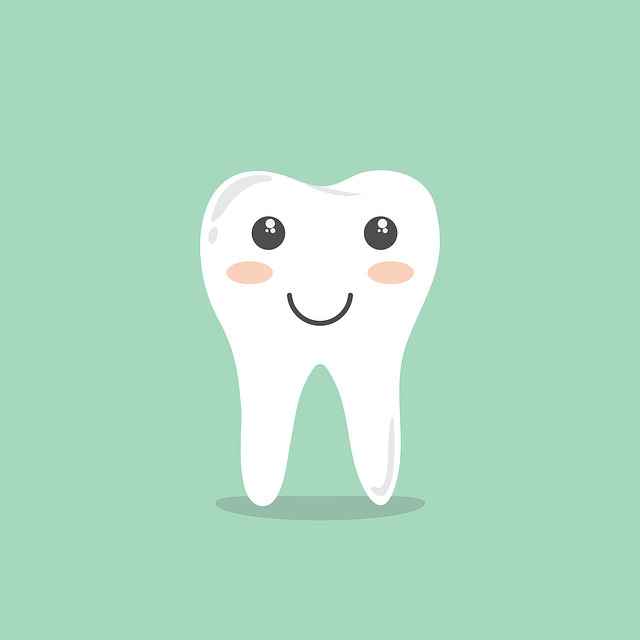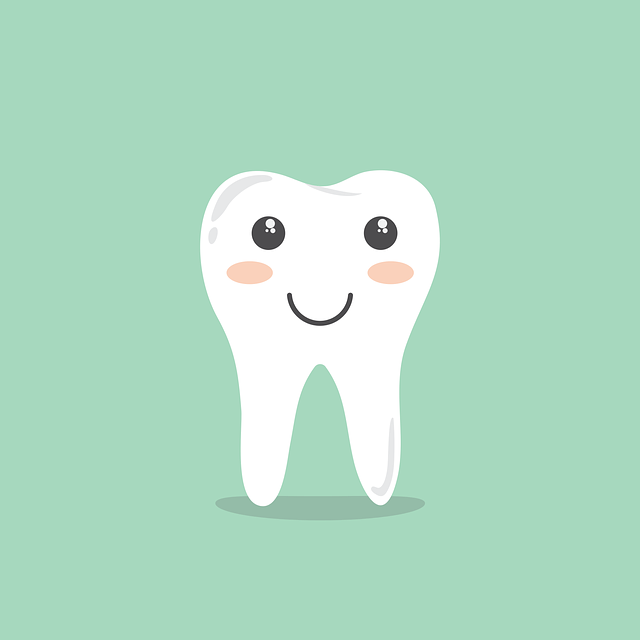Can You Chew Gum with a Retainer? Find Out Now!
Are you a proud owner of a newly fitted retainer, but find yourself craving a piece of gum? The burning question on your mind might be – can you chew gum with a retainer? Fear not, as we dive into the realm of dental appliances and their compatibility with everyone’s favorite sticky treat. In this article, we will explore the ins and outs of chewing gum with a retainer, providing you with a clear and knowledgeable answer. So, sit back, relax, and let’s find out if your retainer can coexist harmoniously with a piece of chewy goodness!
1. Understanding the Role of a Retainer in Orthodontic Treatment
Orthodontic treatment involves more than just straightening teeth. Once the braces come off, a retainer is often necessary to maintain the results achieved. Understanding the role of a retainer is crucial for patients undergoing orthodontic treatment.
A retainer is a custom-made appliance that is typically made of plastic or metal. It is designed to fit snugly over the teeth and help keep them in their new, corrected positions. Here are some key points to understand about the role of a retainer:
- Maintaining alignment: After braces are removed, the teeth have a tendency to shift back to their original positions. Wearing a retainer helps prevent this relapse and maintains the alignment achieved during orthodontic treatment.
- Stabilizing bone and tissues: The bones and tissues surrounding the teeth need time to adapt to their new positions. A retainer provides stability and allows the bone and tissues to settle, ensuring long-term success of the orthodontic treatment.
- Types of retainers: There are various types of retainers available, including removable retainers and fixed retainers. Your orthodontist will recommend the most suitable type for your specific needs.
- Wearing schedule: Initially, you may need to wear your retainer full-time, and then gradually transition to wearing it only at night. Your orthodontist will provide guidance on the duration and schedule for wearing your retainer.
Remember, wearing your retainer as instructed by your orthodontist is crucial for maintaining the results of your orthodontic treatment. It is essential to follow their advice and attend regular check-ups to ensure the continued success of your beautiful smile.

2. Exploring the Dos and Don’ts: Can You Safely Chew Gum with a Retainer?
When it comes to chewing gum with a retainer, there are certain dos and don’ts that you should be aware of in order to ensure the safety of your retainer and your dental health. While it is generally not recommended to chew gum with a retainer, there are a few guidelines you can follow if you still want to indulge occasionally.
Do:
- Stick to sugar-free gum: Chewing gum that contains sugar can increase the risk of tooth decay and damage to your retainer. Opt for sugar-free gum instead, as it is less likely to cause these issues.
- Remove your retainer: If you really want to chew gum, it is best to remove your retainer beforehand. This will prevent any potential damage to the retainer and make it easier to clean your teeth afterwards.
- Practice good oral hygiene: After chewing gum, make sure to brush your teeth thoroughly to remove any residual sugar or debris that may have accumulated.
Don’t:
- Chew gum excessively: Even if you are using sugar-free gum, excessive chewing can put unnecessary strain on your retainer, increasing the risk of it becoming damaged or dislodged.
- Choose sticky or hard gum: Sticky or hard gum can easily get stuck to your retainer and be difficult to remove. Avoid these types of gum to prevent any potential damage.
- Ignore discomfort or changes: If you experience any discomfort or notice any changes in the fit of your retainer after chewing gum, it is important to contact your orthodontist for an evaluation. They will be able to assess any potential issues and provide appropriate guidance.

3. The Potential Risks: What Happens When You Chew Gum with a Retainer?
When it comes to chewing gum with a retainer, there are a few potential risks that you should be aware of. While it may be tempting to indulge in a piece of gum, it is important to consider the following:
- Potential damage to the retainer: Chewing gum can cause the retainer to become distorted or even break. The sticky nature of gum can adhere to the wires and brackets of the retainer, potentially causing them to bend or snap. This can lead to additional visits to your orthodontist for repairs or replacements.
- Increased risk of tooth decay: Chewing gum often contains sugar or artificial sweeteners that can contribute to tooth decay. If you chew gum with a retainer, these sugars can get trapped between the retainer and your teeth, creating an ideal environment for bacteria to thrive. This can increase the risk of cavities and other dental issues.
It is important to note that not all types of gum pose the same risks. Sugar-free gum is generally a better option, as it reduces the risk of tooth decay. However, even sugar-free gum can still cause damage to the retainer if chewed excessively or aggressively. If you are unsure whether or not to chew gum with your retainer, it is best to consult with your orthodontist for personalized advice.

4. Expert Recommendations: Guidelines for Chewing Gum with a Retainer
When it comes to chewing gum with a retainer, following the right guidelines is crucial to ensure optimal oral health and the longevity of your retainer. Our team of experts has compiled these recommendations to help you navigate this situation confidently:
- Choose sugar-free gum: Opt for sugar-free gum to minimize the risk of tooth decay and plaque buildup. Sugar can stick to your teeth and the retainer, creating a breeding ground for bacteria.
- Avoid excessive chewing: While it may be tempting to chew gum for hours on end, it’s best to limit your chewing time to avoid placing unnecessary strain on your retainer. Aim for no more than 15-20 minutes per session.
- Remove your retainer: Whenever you plan to chew gum, it’s highly recommended to remove your retainer first. This will not only prevent damage to the retainer but also ensure a more enjoyable and effective chewing experience.
Remember, these recommendations are meant to serve as general guidelines. If you have any concerns or specific questions about chewing gum with your retainer, don’t hesitate to consult your orthodontist or dental professional. They will provide personalized advice based on your unique situation and help you make informed decisions for maintaining your oral health.

5. Alternatives to Chewing Gum: Satisfying Your Cravings without Risking Your Retainer
When it comes to satisfying your cravings without risking your retainer, there are a variety of alternatives to chewing gum that can provide a similar sensation and taste. These alternatives not only keep your retainer safe but also offer additional benefits for your oral health. Here are some options to consider:
- Mints: Opt for sugar-free mints to freshen your breath and curb your cravings. They provide a burst of flavor without the need to chew, making them a convenient and retainer-friendly alternative.
- Cinnamon sticks: Chewing on a cinnamon stick can give you the satisfaction of chewing without damaging your retainer. Plus, cinnamon has antimicrobial properties that can help fight bacteria in your mouth.
- Fruit slices: Slicing up some crunchy fruits like apples or carrots can provide a satisfying crunch while also giving you a natural sweetness. Just make sure to cut them into bite-sized pieces to avoid putting unnecessary pressure on your retainer.
If you’re looking for something with a bit more variety, consider trying out flavored toothpicks or sugar-free lollipops. These options can provide a longer-lasting sensation and keep your taste buds satisfied. Remember, it’s important to choose alternatives that are retainer-safe and won’t cause any damage or interfere with your orthodontic treatment. By exploring these alternatives, you can enjoy a variety of options while keeping your retainer in excellent condition.
6. Maintaining a Healthy Smile: Tips for Proper Retainer Care and Maintenance
Maintaining proper care and maintenance for your retainer is crucial in ensuring a healthy smile. Here are some helpful tips to keep your retainer in top shape:
- Clean your retainer daily: Just like brushing your teeth, it’s important to clean your retainer daily to remove any bacteria or debris. Use a soft-bristle toothbrush and non-abrasive toothpaste or denture cleaner to gently scrub the retainer. Rinse it thoroughly with warm water before placing it back in your mouth.
- Avoid hot water: Hot water can warp your retainer, so always use cool or lukewarm water when cleaning or soaking it. Exposing your retainer to high temperatures can cause it to lose its shape and effectiveness.
- Store your retainer properly: When not wearing your retainer, make sure to store it in its case. Avoid putting it in a napkin or wrapping it in tissue, as it can easily get lost or accidentally thrown away. Keep it away from pets and young children to prevent any damage or mishaps.
To ensure the longevity of your retainer and maintain a healthy smile, it’s important to follow these care and maintenance tips. Remember to visit your orthodontist regularly for check-ups and adjustments to ensure your retainer continues to fit properly. By taking proper care of your retainer, you can help maintain the alignment of your teeth and enjoy a confident smile for years to come.
7. Conclusion: Making Informed Choices for a Successful Orthodontic Journey
When it comes to embarking on an orthodontic journey, making informed choices is crucial for a successful outcome. By taking the time to educate yourself and consider all the factors involved, you can ensure that you make the best decisions for your oral health and overall well-being.
One important aspect to consider is the type of orthodontic treatment that is most suitable for your needs. With options ranging from traditional metal braces to clear aligners, it’s essential to weigh the pros and cons of each. Factors such as treatment duration, comfort, aesthetics, and cost should be taken into account. Consulting with a knowledgeable orthodontist who can guide you through these options is highly recommended.
- Another crucial factor to consider is the reputation and expertise of the orthodontist you choose. Look for a professional who is experienced, qualified, and has a track record of successful outcomes. Reading reviews, seeking recommendations from friends or family, and conducting thorough research can help you make an informed decision.
- Additionally, it is important to consider the financial aspect of your orthodontic journey. Orthodontic treatment can be a significant investment, so it’s essential to understand the costs involved and explore any potential financing options or insurance coverage that may be available to you.
- Remember that maintaining good oral hygiene throughout your orthodontic treatment is essential for the best results. Following your orthodontist’s instructions, maintaining regular dental check-ups, and practicing proper oral care will contribute to the overall success of your journey.
By making informed choices and considering all these factors, you are setting yourself up for a successful orthodontic journey. Remember, every individual’s needs are unique, so it is crucial to consult with a professional to tailor a treatment plan that suits you best. With the right knowledge and guidance, you can achieve a beautiful, healthy smile that lasts a lifetime.
Frequently Asked Questions
Q: Can you chew gum with a retainer?
A: Yes, you can chew gum with a retainer, but it is generally not recommended.
Q: Why is it not recommended to chew gum with a retainer?
A: Chewing gum with a retainer can potentially damage the retainer or alter its shape, leading to an improper fit.
Q: Are there any specific types of gum that are safe to chew with a retainer?
A: There are no specific types of gum that are considered safe to chew with a retainer. It is best to avoid gum altogether.
Q: What are the risks associated with chewing gum while wearing a retainer?
A: Chewing gum can cause the retainer to bend or break, causing discomfort and requiring repairs or replacement. Additionally, gum can stick to the retainer, making it difficult to clean properly.
Q: Can I chew gum occasionally if I have a retainer?
A: It is not recommended to chew gum at all while wearing a retainer, as even occasional chewing can pose a risk of damaging the retainer.
Q: What should I do if my retainer gets damaged while chewing gum?
A: If your retainer gets damaged while chewing gum, it is important to contact your orthodontist immediately. They will assess the damage and provide guidance on whether repairs or a replacement are necessary.
Q: Is there any way to satisfy the desire to chew gum without risking damage to the retainer?
A: Yes, there are alternative options that can help satisfy the desire to chew without posing a risk to the retainer. Some suggestions include sugar-free mints or candies, or chewing on sugar-free gum alternatives specifically designed for people with orthodontic appliances.
Q: Can I ever chew gum again once I’m done wearing my retainer?
A: Once you are done wearing your retainer, you can generally resume chewing gum as you did before. However, it is always advisable to consult with your orthodontist to ensure it won’t have any adverse effects on your teeth or dental health.
Future Outlook
In conclusion, the question of whether you can chew gum with a retainer has a clear and definitive answer. While it may be tempting to indulge in your favorite gum flavors, it is best to avoid chewing gum while wearing a retainer. The sticky texture and constant motion can potentially damage the retainer or cause it to become dislodged. Additionally, chewing gum can contribute to excessive saliva production, leading to discomfort and potential oral health issues.
To ensure the longevity and effectiveness of your retainer, it is crucial to follow the guidelines provided by your orthodontist. This includes avoiding sticky or hard foods that could compromise the retainer’s integrity. By practicing proper care and maintenance, you can protect your investment and achieve the desired results of your orthodontic treatment.
Remember, your orthodontist is your best source of information and guidance. If you have any doubts or questions about specific foods or activities while wearing a retainer, it is always recommended to consult with them for personalized advice.
In summary, while it may be tempting, it is advisable to refrain from chewing gum while wearing a retainer. By following your orthodontist’s instructions and being mindful of what you consume, you can maintain the health and functionality of your retainer, ensuring a beautiful and confident smile for years to come.






